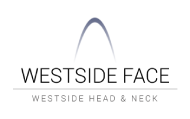
If you have a deviated septum, you may need septoplasty to straighten the wall between nostrils. The septorhinoplasty Los Angeles surgeons perform is done with optimal patient safety in mind. Still, it’s perfectly natural to wonder what could happen if you sneeze after having a Los Angeles septorhinoplasty procedure. Let’s take a moment to discuss post-operative care and possible issues with sneezing.
Bleeding Could Occur (but Don’t Hold Back Sneezes Either)
Following a septoplasty procedure Los Angeles patients are typically advised to try not to sneeze for a week or so after having this type of surgery. If you do, you may experience nasal bleeding and/or pain. Should you feel the urge to sneeze, however, don’t try to hold it back. Doing so could create even more pressure or contribute to an increase in congestion. Instead, sneeze with your mouth open to reduce direct pressure on your nose.
With deviated septum repair Los Angeles patients can also make an effort to prevent sneezing in the first place. Possible ways to do this include:
- Staying away from known sneeze triggers like dust as much as possible
- Using homeopathic nasal sprays
- Managing known allergies
- Avoiding large meals
Proper Wound Care Is Important
When the type of facial reconstruction surgery Los Angeles surgeons perform involves the nose, proper wound care is essential. Being diligent about wound care also means you’ll be less likely to have serious issues if you do have to sneeze during the first few weeks after surgery. If you do have bleeding from the wound area, tilt your head back and dab your nose gently with a tissue.
Use Nasal Spray (but Only for a Limited Time)
Another way to minimize sneezing triggers is to use nasal spray decongestants to keep the nasal passages clear. It’s best to use nasal sprays only for 2-3 days. Long-term use may worsen congestion and create situations where you’ll be more likely to sneeze.
Rinse Your Sinuses
If you know you are susceptible to sneezing because of sinus irritation, regular nasal washes for your nose and sinuses may be helpful. Also referred to as irrigations, these nasal washes are a typical part of post-surgery care as well. The general recommendation is to do nasal rinsing at least twice a day, although some patients prefer to do it more often. Clearing your nasal and sinus passages this way can also remove allergens and other possible sneeze triggers.
Note: If you have a splint temporarily in place, nasal irrigation isn’t necessary. Instead, you may use saline sprays to keep your nose moist and comfortable.
Other Post-Care Tips
If you normally use nasal steroid or antihistamine sprays, avoid going back to them until given the OK to do so by your doctor. It’s best to continue with nasal rinses to keep your nasal and sinus passages clear. Activity should also be limited during the healing period.
Should you sneeze and experience pain or bleeding during the initial healing and recovery period after septorhinoplasty, contact us. If the bleeding is severe, seek immediate medical care. During your initial consultation, we’ll gladly answer your questions and offer more post-surgery care advice. Reach out to us today to learn more.
